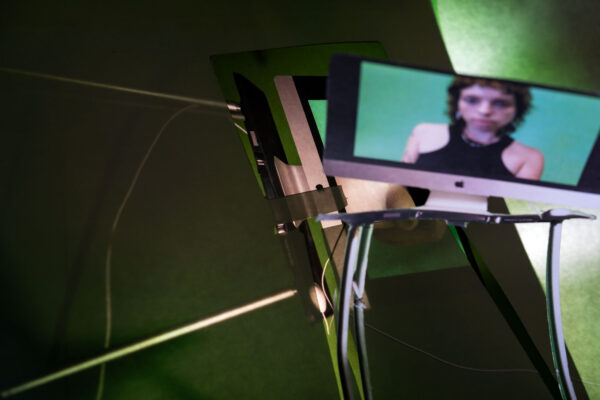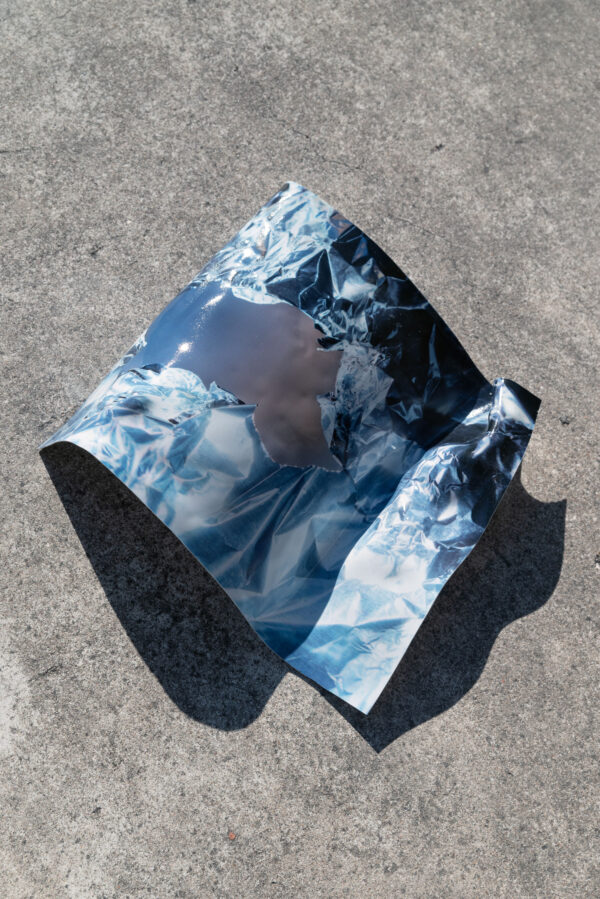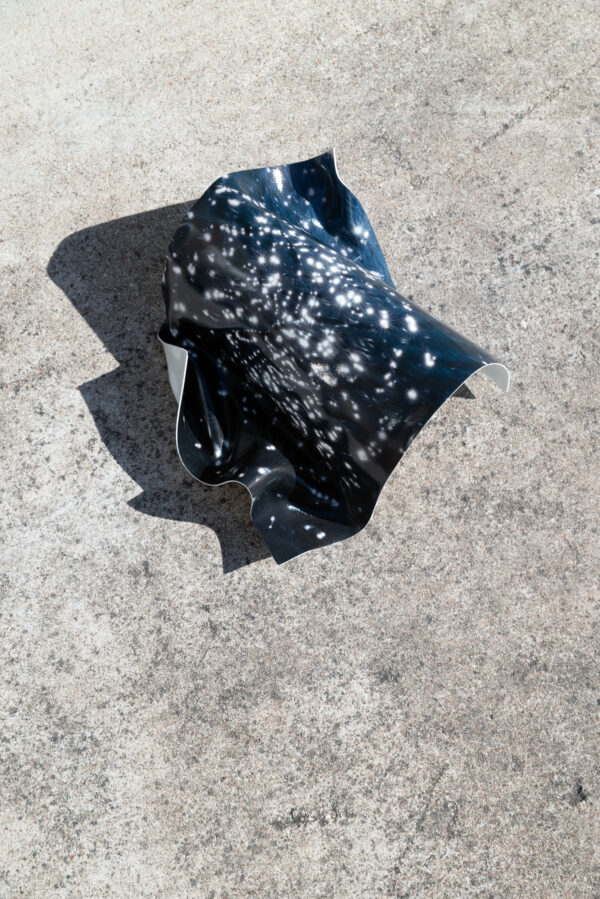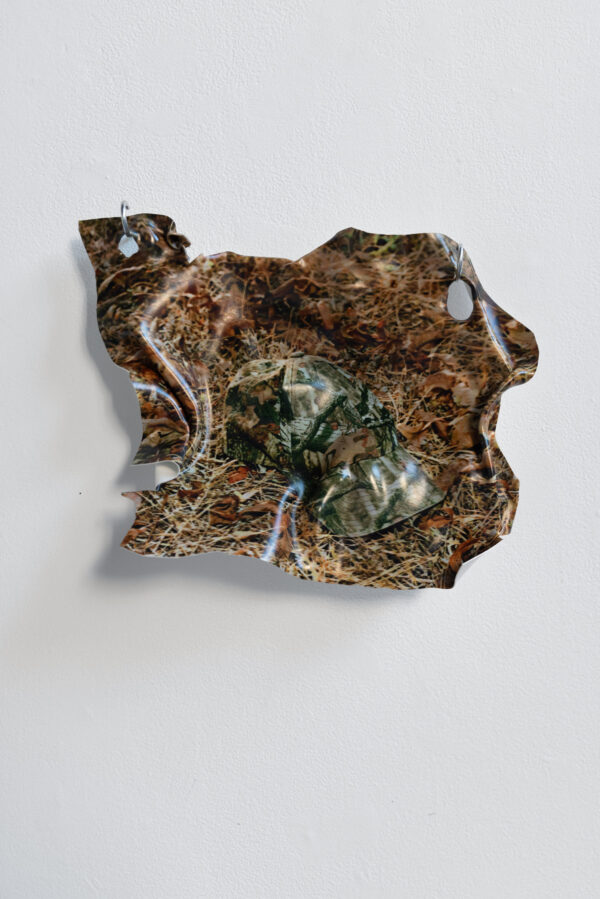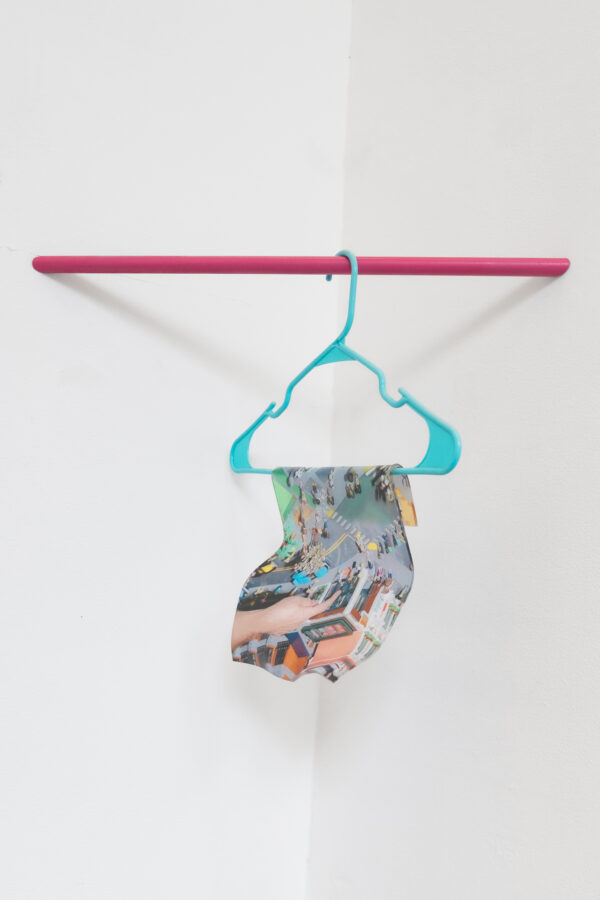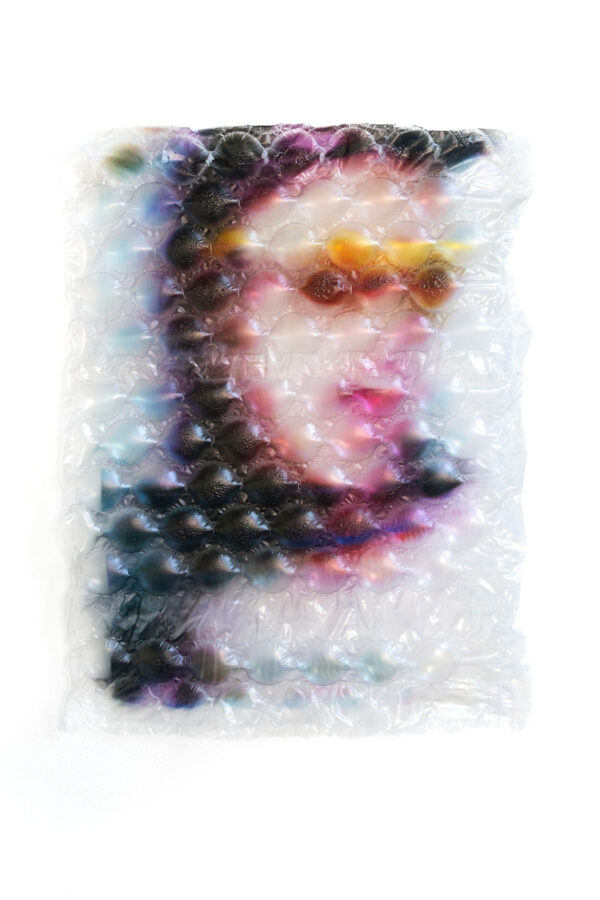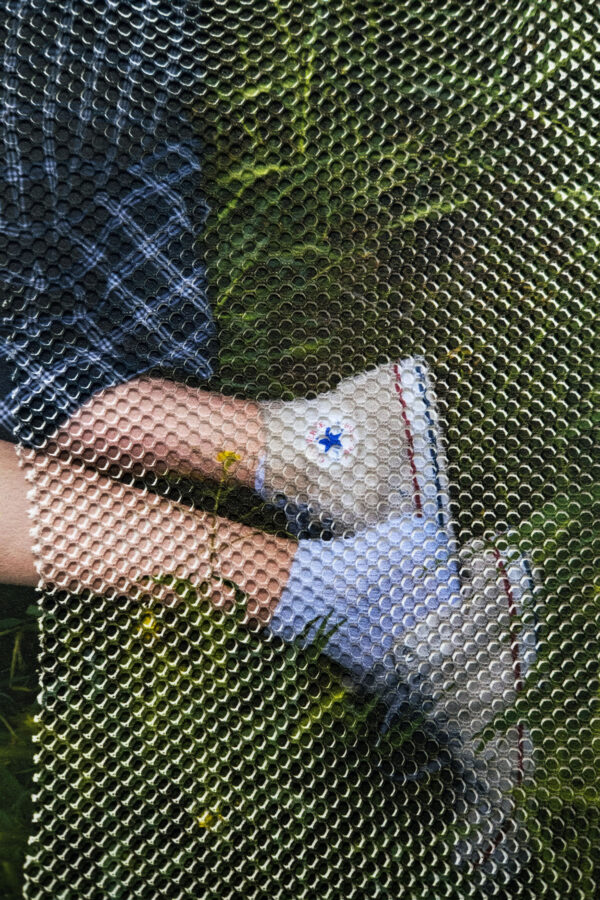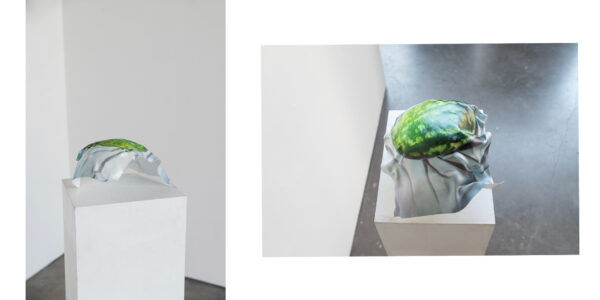In these works, I explore the ever-shrinking divide between the digital and analog worlds. As a millennial, I learned how to curate myself while growing up based on the popular platform at the time—be it livejournal, myspace, facebook, or instagram. I felt like each version I presented to the world was a new avatar, an idealized or hyper-specific part of myself that I chose to represent online. Each of them were real—or contained real parts of me—but none accurately represented who I was. But don’t the IRL expressions of ourselves fall short in the same ways? Who truly “knows” us? What is a “true” representation of the self? When printed upon, bubble wrap reminds me of big, squishy pixels. Mesh becomes halftone. Plexiglass acts as an iPhone screen. The works are physical visualizations of a digital future.
Synthetic Self
13.12.23 — Rosie Clements
In these works, I explore the ever-shrinking divide between the digital and analog worlds. As a millennial, I learned how to curate myself while growing up based on the popular platform at the time—be it livejournal, myspace, facebook, or instagram. I felt like each version I presented to the world was a new avatar, an idealized or hyper-specific part of myself that I chose to represent online. Each of them were real—or contained real parts of me—but none accurately represented who I was. But don’t the IRL expressions of ourselves fall short in the same ways? Who truly “knows” us? What is a “true” representation of the self? When printed upon, bubble wrap reminds me of big, squishy pixels. Mesh becomes halftone. Plexiglass acts as an iPhone screen. The works are physical visualizations of a digital future.








